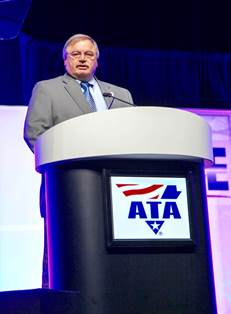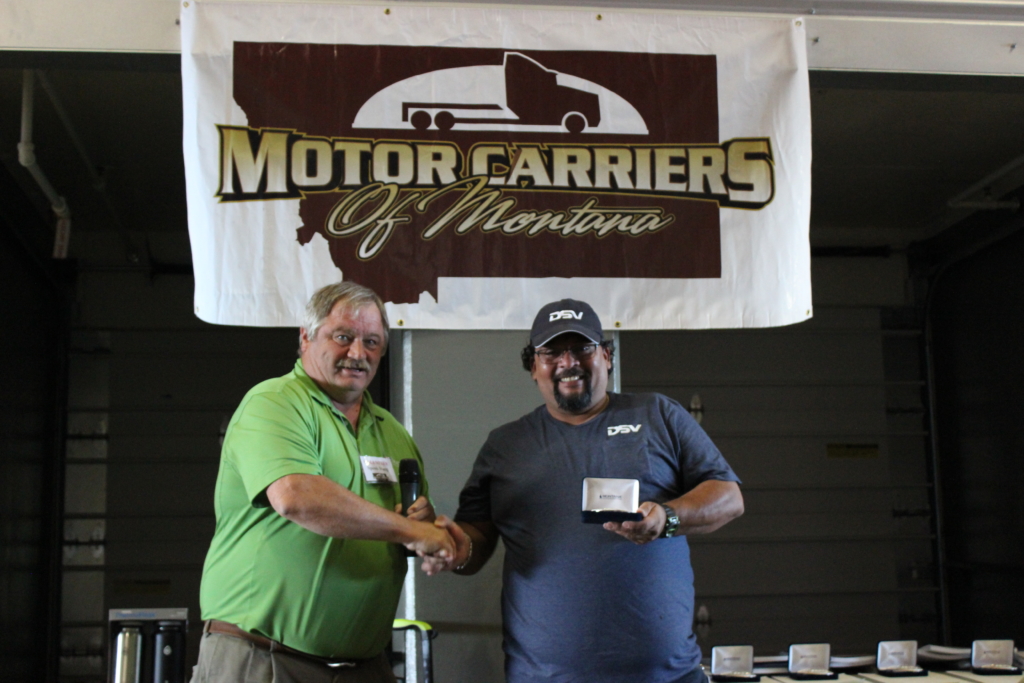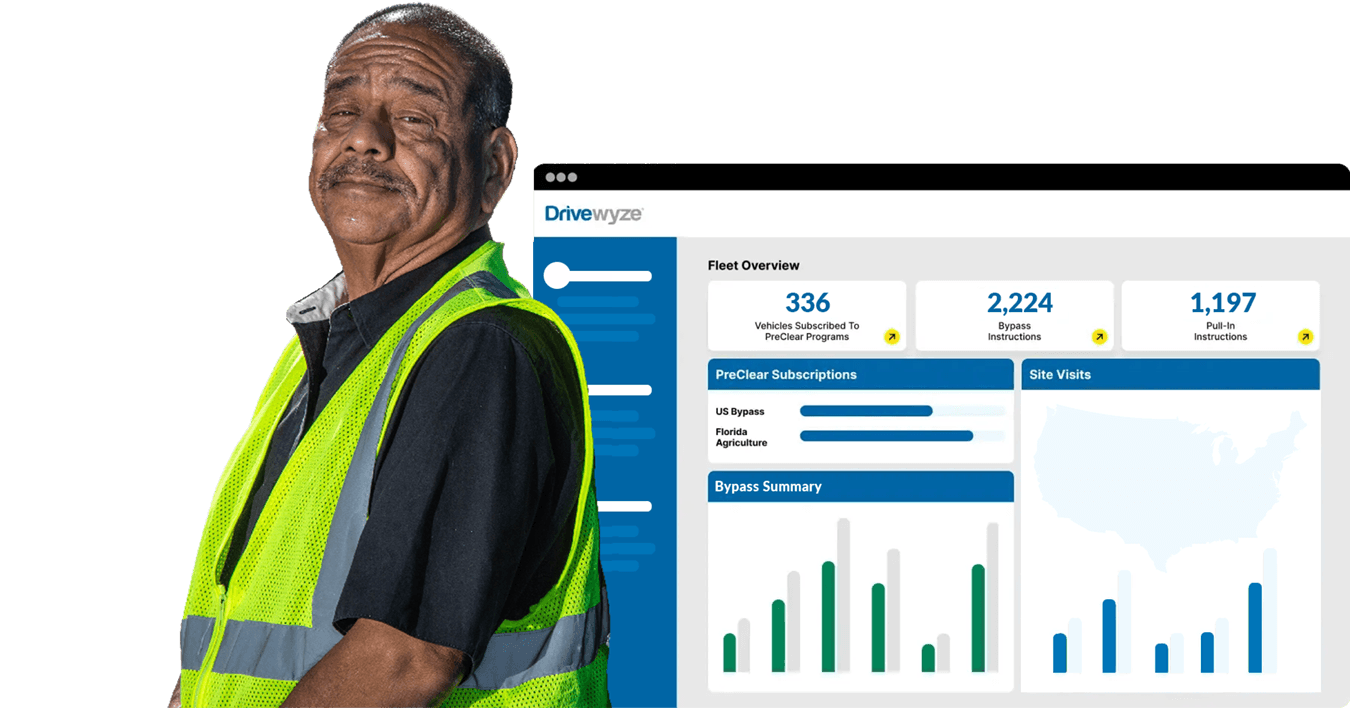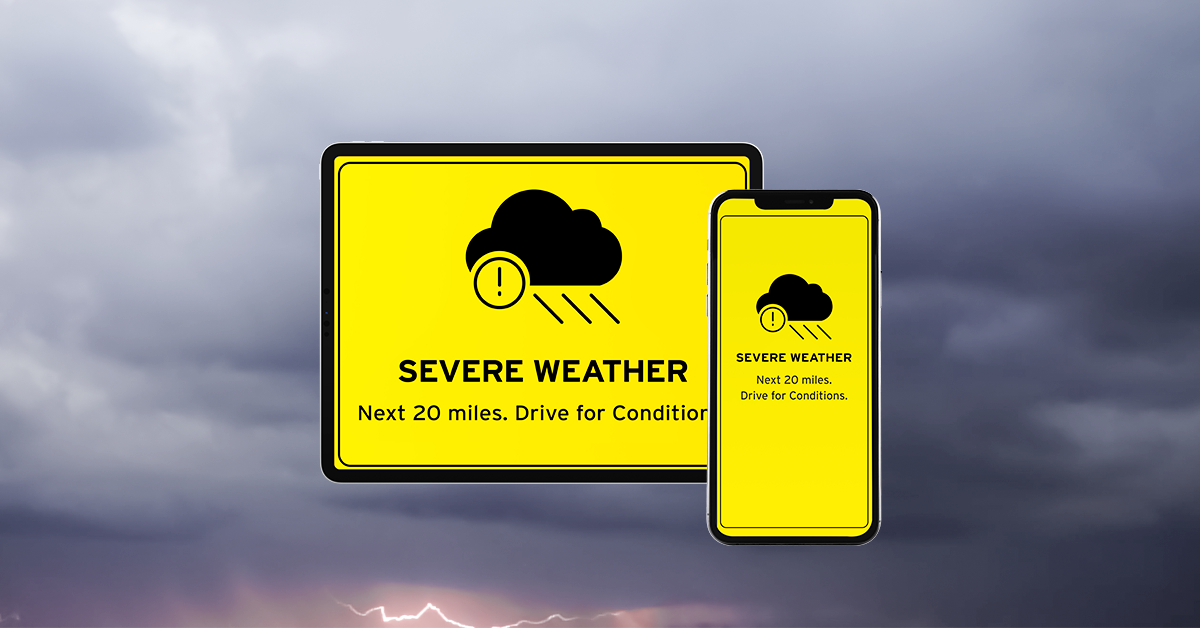NOTE – We continue our ongoing series examining state trucking associations and the people who lead them with this feature on Motor Carriers of Montana and Barry “Spook” Stang, its executive vice president.
Making Big Hauls in the Big Sky

When Barry “Spook” Stang was 7 years old, the future Motor Carriers of Montana executive vice president and Trucking Association Executives Council chairman moved to a remote area of north western Montana at his father’s insistence.
Spook’s father, a World War II veteran and wholesale grocery salesman, had a plan for himself and the rest of the family. This plan required his mother to quit her successful career as a bookkeeper and bank teller in Missoula; buy a small campground and grocery store in St. Regis; and help him manage and run it as a new family-owned business.
FAMILY-OWNED GROCERY STORE INTRODUCES LEADER TO TRUCKING
It was here where Spook first encountered the trucking industry.
After all, trucks delivered most, if not all of the things his family sold in their small grocery store. And on occasion, when drivers were too tired to return to the URM distribution center in Spokane for another load or to drive to their next stop, they might stay overnight at the family’s campground or in their rental cabins.
Several decades have passed since Spook’s father, Leo, convinced his mother, Angie, to uproot the family and move to St. Regis, which in 1958 was little more than a roadside bus stop on Highway 10 between Spokane and Missoula. Still, his father’s fateful decision to move to St. Regis eventually placed Spook on a career path that included the study of accounting at Carroll College in Helena and graduation with an accounting degree. After college, he spent three years at an accounting firm and nearly 30 years serving in various management roles in the grocery business. Spook also served in the Montana Legislature for 14 years after his election to the House of Representatives in 1986 and to the State Senate in 1992.
STRONG POLITICAL EXPERIENCE PAYS OFF
Following his unsuccessful bid for state auditor in 2000, Spook decided to leave public service and the grocery business and accept a job as a paid lobbyist for the Montana Motor Carriers Association, (which later in 2010 shortened its name to Motor Carriers of Montana). During the 2001 Legislative session, Spook leveraged his legislative experience and connections as he lobbied on behalf of the association. Spook succeeded in getting the Legislature to cut the registration fees on commercial motor vehicles by 50 percent, a reduction that’s still in effect today.
Following his successful turn as the association’s lobbyist, the organization offered Spook the job of executive vice president in 2001. And he has been serving in that position ever since.
In the association’s special 75th anniversary issue of Roadwise in 2014, Curt Laingen, owner of Billings, Montana-based Curt Laingen Trucking and a former association staff member, said Spook’s 14 years of legislative experience representing western Montana proved to be invaluable.
“Spook added a lot of political clout…Spook is an excellent politician,” Laingen said in that Roadwise article. “He gets along with everybody. Just a good guy.”
SPOOK BUILDS UPON ASSOCIATION’S LONG LEGACY

Following his hiring in 2001, Spook successfully worked with other groups to get a tort reform law passed in 2003 that limited punitive damages to the lesser amount of $10 million or 3 percent of a defendant’s net worth. Under Spook’s leadership, the association also worked with other organizations to pass legislation clearly defining the difference between employers and independent contractors, ensuring motor carriers can use both without an undue exposure to risk of litigation.
When it comes to fulfilling its mission statement regarding safety, the Montana trucking association has taken on a leadership role for decades. Long before Spook joined the association, the association organized safety and driver of the month programs to encourage best practices among its members. Beginning in the ‘40s, the association held truck roadeos – driving and safety competitions with winners advancing to national competitions. In 1958, the association worked with other state trucking groups in Idaho, Colorado, Utah and Wyoming to establish the Rocky Mountain Regional Safety Rendezvous. Each year at the association’s annual convention, safety awards are awarded to carriers with good safety records.
YOUTH LEARN TO “SHARE THE ROAD” WITH TRUCKERS
In the ‘90s, the association established its now annual signature program – the Share The Road campaign with events at high schools in the state’s major cities such as Missoula, Billings, Bozeman and Great Falls. At the events, trucking companies join law enforcement officers to train young people on how to share the road with semi-trucks. Students also learn safe driving tips that they can use for the rest of their lives.
During his tenure, Spook has continued the association’s tradition of leadership and built upon it by proposing safety programs that have challenged not only the public’s perceptions of the trucking industry, but also some in the industry. Several years ago, a number of truck accidents occurred on Montana Highway 35 along the eastern shore of Flathead Lake. During one of those incidents, several thousand gallons of gasoline spilled into the ground dangerously close to the lake and forced five nearby families to evacuate their homes for months. The public clamored for a strong response from their state and local officials. They wanted all truck traffic on Highway 35 banned and re-routed to U.S. Highway 93.
DRIVE NEAR FLATHEAD LAKE? WOULD IT “SPOOK” YOU TO KNOW SOMEONE’S WATCHING?
Highway 35 is a windier road than U.S. Highway 93 since it runs closer to the lake and has about 150 more access points. However, U.S. Highway 93 is far less efficient for trucking companies running loads between Columbia Falls and Missoula because it adds 15 miles to the route and takes on average about 25 minutes longer to travel between Missoula and Columbia Falls.
Rather than establish restrictions, public officials, with the assistance of MCM leaders and members, unveiled an industry self-policing effort modeled after neighborhood watch programs. Signs advertising a hotline number for motorists and truckers alike to report unsafe drivers were posted. Plus, haulers had drivers armed with radar guns patrol the two highways once a week in private vehicles for the first six months. When those undercover drivers identified trucks and drivers who were clearly driving too fast or being careless, information was sent to that driver’s company with a warning that the next time the driver was caught speeding, the information would be sent to law enforcement. The aim was to “find the bad guys and weed them out.”
Residents in the local Flathead Lake communities along the two highways were asked to volunteer as ride-along passengers to observe and suggest stretches of the highway where they had witnessed incidents of dangerous driving. Spook said the intention of the ride-alongs was to demonstrate the sincerity and integrity of the effort.
MONTANA TRUCKERS JOIN EFFORTS TO END HUMAN TRAFFICKING
Spook has also encouraged the association and its members to actively participate in efforts to end human trafficking.
During the Bakken oil boom earlier this decade, the Montana Legislature and State Attorney General’s Office expanded local laws in an attempt to prevent and punish human trafficking. The effort was in response to a growing number of reports of increased prostitution in eastern Montana at that time. To raise awareness about human trafficking, the state attorney general and the Montana Department of Justice established the Montana Human Trafficking Task Force in 2012.
Spook encouraged Motor Carriers of Montana members to support those efforts by assisting with the distribution of prominent truck decals with a toll-free number to report suspicious activity. The association called on its members to apply these decals onto their trailers so that they could become running billboards as the trucks and trailers travel across the state, the region and across the country.
Spook’s efforts and leadership have not gone unnoticed in the trucking industry. In 2015, the Trucking Associations Executive Council—which is made up of leaders from all 50 state trucking associations and ATA councils—chose Spook to serve as the TAEC president for the next year.
Spook and the MMC believes it’s in the industry’s best interests to engage the community and to demonstrate a commitment to safer operations. In a column published in the Missoulian on Dec. 27, 2016, Spook explained to his fellow Montanans why the trucking industry is so important to their communities and the state’s economy.
TRUCKS ARE A LIFELINE FOR MANY MONTANA COMMUNITIES
“In Montana, 65 percent of communities depend exclusively on trucks to move their goods,” Spook wrote. “In addition to providing all those goods and cargo, trucking keeps your family members moving on the roads for that special time together by ensuring our gas stations are amply stocked with fuel.
“When more than 100 million drivers are on the road this (holiday) season – as the American Automobile Association forecasted for year-end holidays (in 2015) – they’ll be driving alongside nearly 3.5 million professional truck drivers, with 6,210 drivers in Montana alone,” Spook said. “That’s why professional truck drivers are trained and dedicated to ensuring the safety of all motorists on the road, and why the industry as a whole invests $9.5 billion each year in safety.”

TRUCKING INDUSTRY MAKES BIG INVESTMENTS IN SAFETY
Spook points out the $9.5 billion annual investment covers a wide range – driver training, on-board safety technology, and awards and bonus pay for improved safety performance. That investment is clearly paying off, he adds. Quoting a U.S. Department of Transportation report, Spook said the crash rate for trucks is 28 percent lower than that of other vehicles. Plus, the fatal crash rate has fallen 74 percent since 1980 – 17 percent in the last decade alone. These improvements come even as the industry is expanding with the addition of more than 2 1/2 million more trucks with billions of additional miles each year.
“Trucking touches every aspect of the holidays – and it goes beyond stocking grocery store shelves or delivering that perfect gift,” he wrote. “In addition to keeping our roads safe – during the holidays and throughout the year – trucking works to better our communities. From safety to service, the trucking industry is dedicated to ensuring the holidays happen for all of us.”
AT A GLANCE
State trucking association: Motor Carriers of Montana
Address: 501 N. Sanders Suite 201, Helena, Montana 59601
Email: spook@mttrucking.org
Website: https://www.mttrucking.org/
How to join: To join Motor Carriers of Montana, visit mttrucking.org, call 406-442-6600, or Karen Lynch, office manager, at karen@mttrucking.org
Phone: 406-442-6600
Founded: August 1939 at the Northern Hotel in Billings
Membership: 600 company members – a diverse group comprised of trucking companies, passenger carriers, garbage haulers, construction and excavating companies and companies providing products and services.
Mission: As responsible citizens, we promote and represent safe, professional and profitable commercial highway transportation interests with one voice.
Executive vice president: Barry “Spook” Stang
Industry’s biggest challenge: Driver shortage
Interesting facts about the Motor Carriers of Montana:
- Long before women began appearing in truck cabs, let alone board rooms, the association elected its first female president – Agnes Calvin, in 1966. Four years before Americans would consider the country’s first female candidate for vice president from a major party on a presidential ticket – U.S. Rep. Geraldine Ferraro, the association elected its second woman president in 1980 – Peggy Jerrel of Miles City-based Ray Jerrel Inc.
- Until 1980, motor carriers were required to obtain certificates of authority from the federal Interstate Commerce Commission detailing what they could haul and where they could go. As Congress debated whether to put an end to this regulatory environment through the proposed Motor Carriers Act, Montana Motor Carriers Association president Peggy Jerrel testified before Congress asking for clarity. Her message was characteristically Montanan: “make up your mind!”
- When the federal government lifted the 55-mph speed limit on all federal interstates and highways in 1995, Montana’s speed limit reverted to the one that had been on the books before the 55-mph speed limit was enacted during the Carter Administration. That limit required drivers to drive at speeds that were “reasonable and prudent.” After the Montana Supreme Court declared that law to be unconstitutionally vague, the Montana Motor Carriers Association helped fashion the split plan that’s in effect today – 65 mph for trucks and 75 mph for passenger cars on the interstates.
- The Motor Carriers of Montana has had three different names during its 78-year history. When it was established in 1939, it was called the Montana Motor Transport Association. The name changed twice – first to Montana Motor Carriers Association in 1977 and the last time to its current Motor Carriers of Montana in 2010.
- MCM Executive vice president Spook Stang first approached Billings, Montana-based Whitewood Transport owner Mike Wilson about his interest in delivering the U.S. Capitol Christmas Tree from the Kootenai National Forest to Washington, D.C., in 2017.
State Legislature Approves Use of Triple Trailers Due to MCM’s Efforts
In the 1990s, when Curt Laingen, owner of Billings, Montana-based Curt Laingen Trucking, worked full-time on the association’s staff for eight years starting in 1989, the state authorized the use of triple trailers. According to a cover story in the fourth quarter 2014 issue of Roadwise, the association’s former quarterly magazine, it was no easy feat.
“We were constantly bombarded by certain organizations and groups that didn’t think the trucking industry should have those big trucks in Montana,” said Ben Havdahl, former executive vice president of the association from 1979 until he retired at the end of 1998.
Getting that approval took two legislative sessions. First the Legislature passed a law granting trucking companies the ability to pull three 28 ½-foot-long trailers, but with strict safety criteria and a sunset clause ending the privilege after two years. The association then had to return later to get the privilege re-instated.
“The railroads, who were opposed to the privilege, funded a non-profit group, Citizens for Reliable and Safe Highways, or CRASH, that lobbied against the motor carriers,” according to the cover story in the Roadwise 75th anniversary issue. “The day the legislative committee was to hear the bill on triples legislation, the railroads encircled the Capitol with trailers, the point being that approving the bill would result in clogged interstates. But that morning a train derailed in East Helena with such force that the railcars nearly ran up on to U.S. Highway 12.”
The Legislature eventually approved the bill.

Ready to Get Started?
Learn how North America’s leading carriers use Drivewyze to save money and improve safety.





